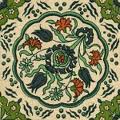Imaam an-Nawawi (rahimahu Allaahu ta’aalaa – died 676 Hijree) was without doubt one of the greatest scholars this Ummah has been blessed with. His works have had a tremendous benefit and influence for the Muslims throughout history, and from amongst his works is his collection of 42 ahaadeeth of the Prophet sallAllaahu ‘alayhi wa sallam which together form a comprehensive explanation of this Great Deen of Islaam. This work is commonly referred to as “an-Nawawi’s Forty Hadeeth” and without doubt it contains immense benefit and guidance.
The complete name of Imaam an-Nawawi is Abu Zakaria Mohiuddin Yahya, son of Sharaf An-Nawawi. Nawawi refers to Nawaa, a place near Damascus, in the suburb of the city of Howran. Imaam an-Nawawi was born at Nawa in the year 631 A.H.(about 1255 CE) His father, a virtuous and pious man, resolved to arrange for proper and befitting education as he had discovered the symptoms of heavenly intelligence and wisdom in his promising child at an early stage.
The Imaam’s Simplicity and Good Manners:
The learned persons, elite of the society and the public greatly respected the Imaam on account of his piety, learning and excellent character. He used simple dress and ate simple food. Devout scholars do not care about worldly chattels, they give preference to religious and academic pursuits, and the propagation of Faith. They experience more heavenly delight and joy in such activities than those who seek satisfaction in luxurious foods, precious clothes and other worldly things. Imaam an-Nawawi had a prominent place among the erudite notables of his age. He was a God-fearing person having illustrious and glorious aims regarding the propagation of Faith.
The celebrated Shaykh Mohiuddin expresses his impression about Imaam an-Nawawi thus:
“Imaam an-Nawawi had three distinctive commendable qualities in his person. If anybody has only one out of these three, people turn to him in abundance for guidance. First, having knowledge and its dissemination. Second, to evade completely from the worldly inclinations, and the third, inviting to all that is good (Islam) enjoining Al-Ma’ruf [i.e., Islamic Monotheism and all that Islam orders one to do] and forbidding Al-Munkar [polytheism and disbelief and all that Islam has forbidden]. Imaam an-Nawawi had all three in him.”
His works and his death:
The learned Imaam had a very short life but even during this short period, he had written a large number of books on different subjects. Every work of the Imaam is a masterpiece and a treasure of knowledge. Hundreds and thousands of people benefit from these works.
Some of his works :
- Al-Minhaj fi Sharh Sahih Muslim – A Commentary on Sahih Muslim
- al-Arba’een (ie The Forty Hadeeth)
- Riyaad-us-Saliheen
- Kitaab-ur-Raudah
- Tahdheeb-ul-Asmaa was-Sifaat
- Kitaab-ul-Adhkaar
- At-Taqreeb fee Ilmil-Hadeeth wal-Irshad feehi
- Sharh Sunan Abee Dawood (Incomplete)
- Tabaqaat Ash-Shaafi’iyyah
- Muhimmatul-Ahkaam
- Bustaan-ul-‘Aarifeen
- Al-Khulaasatu fil-Hadeeth
At about the age of 45, Imaam an-Nawawi returned to his hometown. Soon after his arrival at Nawaa, he fell ill and died. However, Imaam an-Nawawi is still living in the hearts of Muslims. His works are of everlasting value. May Allah have Mercy upon him.



